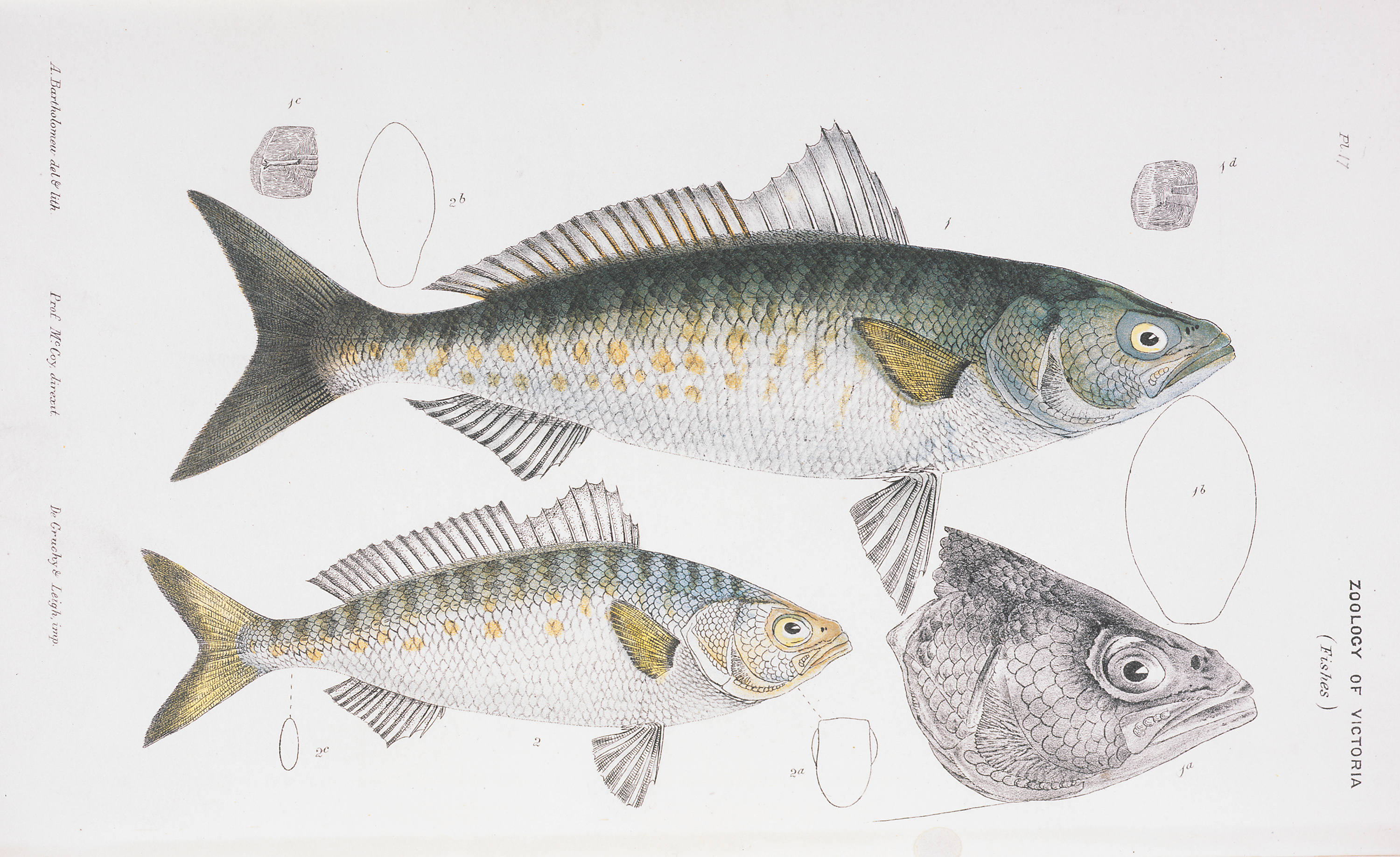Western Australian Salmon, Arripis truttaceus
Plates 16-17. The Salmon Arripis, Arripis truttaceus (now known as the Western Australian Salmon, Arripis truttacea), obtained from Melbourne - fish market
The adult condition of the this fish, which is attained at about 2 feet in length, is improperly called "Salmon" by the colonists of the Victorian coasts, and is of a nearly uniform pale-olive color, without spots, paler on the lower half of the body. When about a foot in length it is popularly called "Salmon Trout" by the fisherman and in the markets, and then differs from the adult in its smaller size, proportionately larger eyes, dark cloudy spots on the back, and the conspicuous rows of large round brass-like spots on the sides. All these characters I have many years ago proved to be merely characteristics of the younger stages of growth.
Nearly all the cases of fish-poisoning in Victoria are referable to their species. Some persons are under the impression that the bad consequences are due to incipient decomposition; but I am certain that this is not always the case, as I have known several instances in which the effects were strongly marked after eating perfectly fresh examples, caught only an hour or so before cooking. It is curious that it is only at certain times and to certain people that this fish is more or less poisonous, while certainly good for food under other circumstances not yet understood. I have known three out of five people made seriously ill from eating at breakfast newly caught fish from one basket, and the two others felt no inconvenience whatever. The symptoms are, generally a few hours after eating, an extraordinary redness or flush of the skin, particularly of the face, often followed by an irruption, which soon passes away, with great derangement of the digestive organs, severe headache, vomiting, &c. Some cases of death have been reported, but generally, the symptoms pass away in a few hours or days.*
The flesh often has a dull pinkish tinge, which may be one of the reasons for the popular application of the names "salmon" and "salmon trout" to this fish, not representing the true salmon in any important respect.
One of the most abundant of the food-fishes of Victoria in all the warmer months of the year, disappearing in the cold weather. It is not usually seen at the best tables, but is sold in great quantities by hawkers around the suburbs of Melbourne. The younger ages are very conspicuous in the fish shops by their yellow pectorals.
* Dr. Youl, the City Coroner for many years, informs me that although he has seen many of these cases of fish-poisoning, the deaths reported were found by the jury to be due to other causes.
